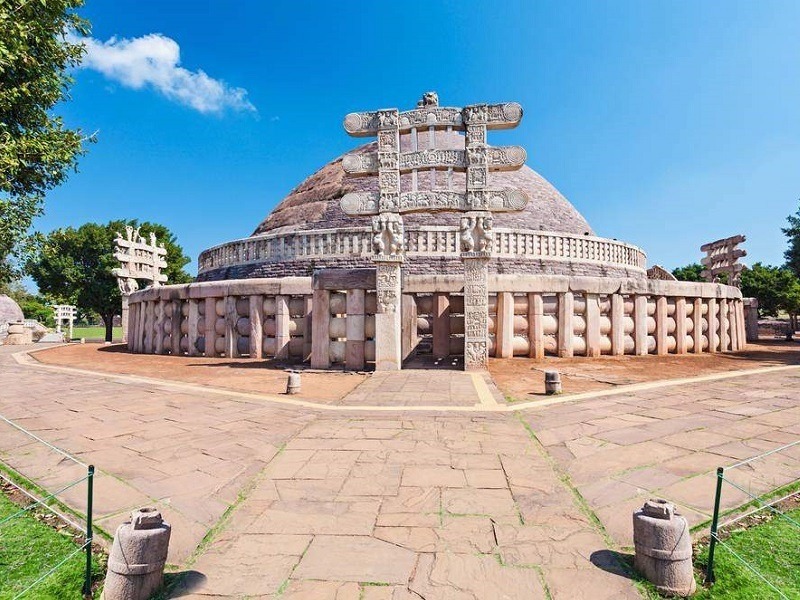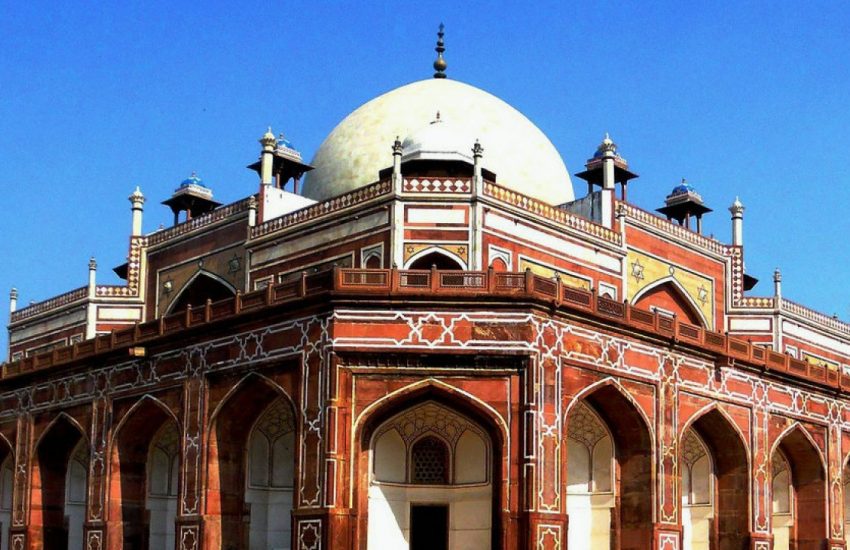Masterpieces showing Diversity in Indian Architectur0065
Table of Contents
Taj Mahal:
Taj Mahal is undoubtedly, perhaps the most great bits of engineering in India as well as from one side of the planet to the other. For quite a long time, it has been the essence of Indian design for individuals everywhere on the world. Inherent 1653 on the sets of the Mughal ruler Shahjahan as a resting place for his darling sovereign Mumtaj Mahal, it is an image of affection. Viewed as perhaps the best illustration of Mughal engineering, the white marble building contains a square plinth having a focal design topped by an enormous arch and encompassed by four minarets at each corner. It is considered as one of the seven miracles of the world in the cutting edge period. It draws in around 3 million sightseers consistently hence being a superstar for guests universally. The Taj Mahal online site is one of the authentic locales that offer free online virtual visits.
Lotus Temple:
Photograph by Futo-Tussauds – http://www.flickr.com/photographs/38461777@N05/
It is one of the advanced structures that have come up lately and has figured out how to accomplish a status and distinction that draws in travelers from everywhere the world. Conceptualized on the type of Lotus blossom, it is a Bahai’i House of love that is available to all religions and represents the secularism and transparency of the country. Planned by Iranian designer Fariborz Sahba, the construction is made out of 27 petals adjusted in groupings of three accordingly shaping a roundabout fringe that is co-adjusted by the formal convictions of Baha’i people group.
Golden Fort, Rajasthan:
the Amber Fort
Golden Fort is one of the slope fortifications in Rajasthan. An example of Hindu engineering in a Rajputana style, this post is 11km away from the city of Jaipur. Made of Red-Sandstone and Marble, it is popular for its self-supporting highlights. Having Moata Lake as its perpetual water source and profoundly progressed ventilation framework done by splendid plan, the entire constructions is an unmistakable showcase of the sovereignty just as the rich social legacy of Rajasthan.
Ajanta-Ellora Caves:
Worked during the time-frame of second century B.C. to sixth century A.D., these caverns are the best instances of rock-cut caverns. Sharpened out of volcanic ballistic developments while existing in a straight example, there are 34 caverns, containing the leftovers of Buddhist, Hindu and Jain sanctuaries. These dividers are furnished with etchings showing the existence of Lord Buddha. The reason for these caverns was to give a safe-haven to the priests to think. Ellora specifically is celebrated for world’s biggest solid exhuming prompting disclosure of the incomparable Kailasa sanctuary.
Chand Baori:
first Place – Architecture © Paddy Chao. Picture Courtesy of IPPAWARDS
It is the most profound advance well on the planet. Arranged in the territory of Rajasthan, it was underlying ninth century as a wellspring of water for individuals in the adjoining towns. The entire design is a square development, 100 feet deep with 3500 stages and an outskirts of 140 meters. It shows the mathematical insight of modelers and neighborhood skilled workers of that time. This progression well stands as an ideal model that shows how Vernacular design is of, for and by individuals.
Sun Temple, Konark:
from the “Indian Architecture” by Percy Brown, 1942
Lying in the shoreline of Bay of Bengal, it is viewed as probably the best illustration of Dravidian Architecture. Otherwise called the Black Pagoda, it is considered as perhaps the most stupendous sanctuary in India. Implicit thirteenth century, it has a type of a goliath chariot with twelve complicatedly created wheels drove by seven ponies. A genuine wonder that shows the high level craftsmanship just as adoration and commitment of that period for workmanship.
Sanchi Stupa:
Sanchi Stupa
Implicit third century B.C., a remarkable example of Buddhist craftsmanship and engineering, it is one of the conspicuous landmarks from antiquated India. A stupa is by and large a hemispherical vault structure containing relics of Lord Buddha. In this specific stupa, Lord Buddha has been emblematically addressed by impressions, seats, wheels and so on and every one of them are stunningly ornamented.
Victoria Memorial:
phtography by © Dave Morris
It is a dedication that was celebrated on the passing of Queen Victoria by the Viceroy of India, Lord Curzon and opened for public in 1921. Planned by Sir William Emerson, President of the Royal Institute of British Architects, it is in an Indo-Saracenic evangelist style. As per Lord Curzon,
“Let us, along these lines, have a structure, impressive, roomy, stupendous and great, to which each newbie in Calcutta will turn, to which all the occupant populace, European and Native, will run, where all classes will become familiar with the exercises of history, and see resuscitated before their eyes the wonders of the past.”
Produced using Makrana marbles from Rajasthan, the gallery has a tremendous assortment of leftovers from the time of British Empire rule in India. Structural components like the extraordinary arch, grouped with four auxiliary, octagonal domed chattris, the high entryways, the patio and the domed corner towers have been utilized with incredible accuracy.
Read also: Greatest and Most Beautiful Architectural Accomplishments
IIM Ahmedabad:
Planned by American planner Louis I Kahn, it is extraordinary compared to other institutional structures in the country.This building is viewed as an incredible model concerning how Modern design can flawlessly exist together with conventional engineering, everything necessary is inventiveness and will. India Vernacular engineering could undoubtedly be found in the determination of materials just as utilization of mathematical creations to offer shape to something amazing. Likewise the pressure given on not simply restricting figuring out how to homerooms hence making spaces like corridors and courts considerably more noticeable. Likewise the utilization of voids in the exterior of the structure is probably the best component.
Thikse Monastery:
Thiksey Monastery
This Buddhist cloister lies in the lap of Indus valley. Favored essentially, it is based on a slope. The entire structure is partitioned into parts as indicated by their significance. So inhabitants live in the lower parts while sanctuaries are at the top. Aside from that, it is situated at a height of 3,600 meters. Having 12-story, it is the greatest cloister in Ladakh district. One can likewise track down some uncommon and valuable stupas, sculptures, thangkas, divider works of art and swords in the cloister. Structurally, the most astonishing highlights are the utilization of vernacular strategies in each component of structures, regardless of whether it be dividers, sections or rooftops in this manner ending up bein






